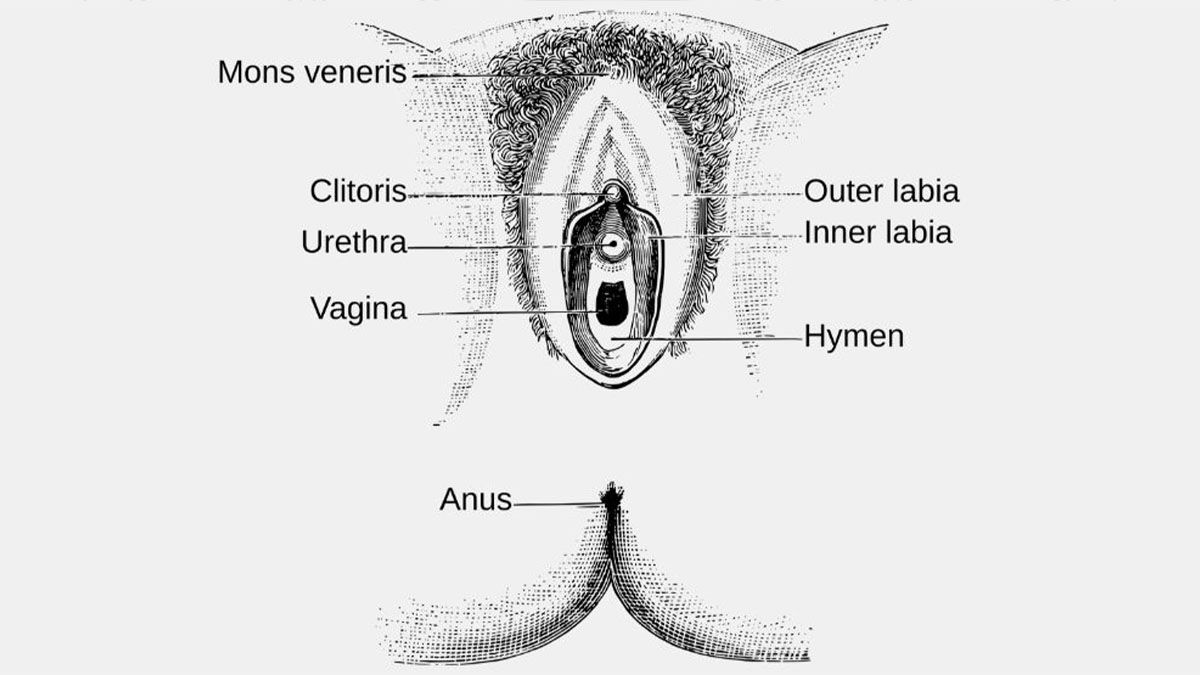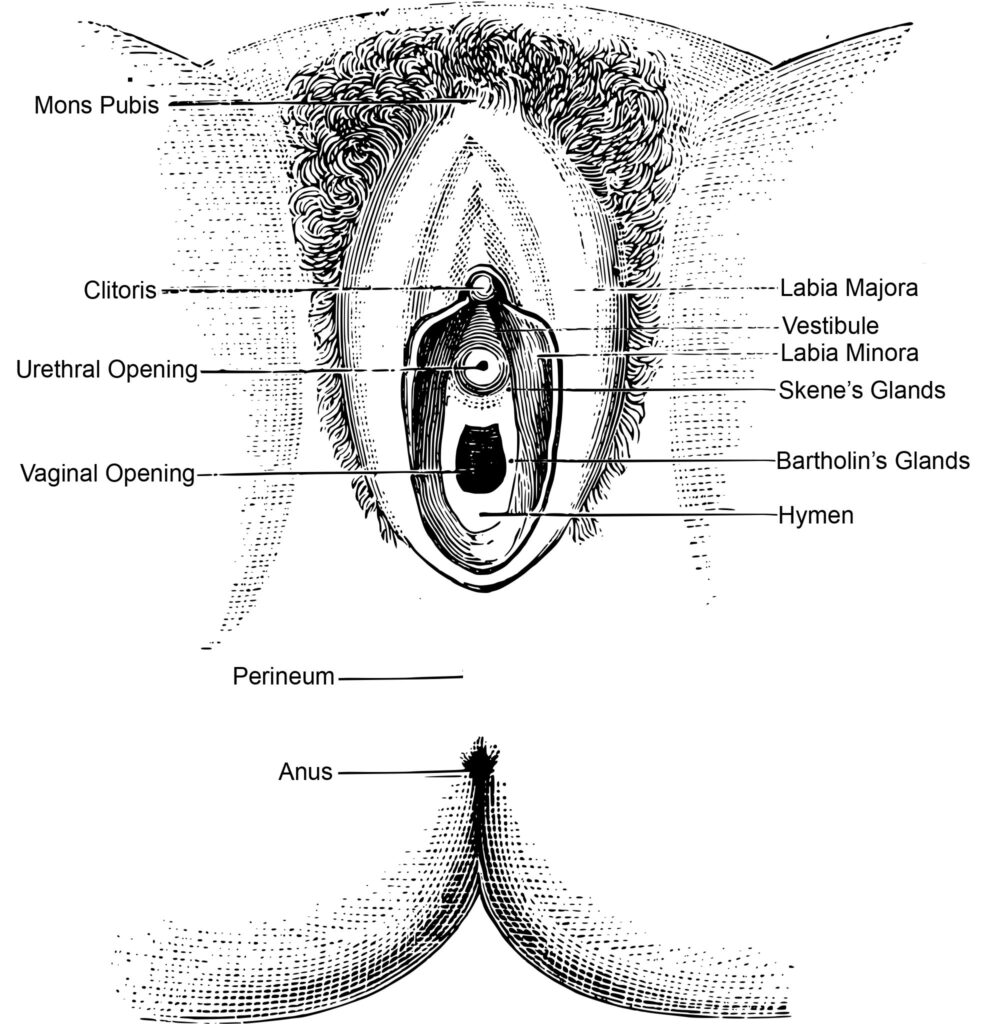
The Complete Guide to Vulva Anatomy: A Plain-Language Breakdown with Diagram
Understanding the vulva is key to knowing your body, supporting health, and boosting confidence. The vulva is the external part of female genitalia—what you see and feel on the outside—distinct from the vagina, which is the internal canal. Vulvas vary widely in size, shape, color, and symmetry due to genetics, hormones, age, or life events like puberty or childbirth.
This guide explains each part in simple terms, paired with a description of a diagram to help visualize the anatomy. The diagram will be a front-view illustration of the vulva, labeled clearly to show its components.
Overview of Vulva Anatomy

Picture a front-view diagram of the vulva, as if looking with legs slightly apart. At the top is a soft, rounded mound, often with pubic hair. Below, two outer folds of skin frame the area like curtains. Inside are thinner folds surrounding a central zone with openings for urine and the vagina. A small, sensitive nub sits at the top of this zone, and smooth skin at the bottom leads toward the anus (not part of the vulva).
The diagram will show:
- Mons pubis at the top.
- Clitoris just below.
- Labia majora (outer lips) on the sides.
- Labia minora (inner lips) inside them.
- Urethral opening and vaginal opening in the center.
- Perineum at the bottom.
These parts protect internal organs, enable urination, menstruation, sexual pleasure, and childbirth.
Table: Summary of Vulva Anatomy Parts
| Part | Location | Function | Diagram Reference |
|---|---|---|---|
| Mons Pubis | Topmost part, above pubic bone | Cushioning and pheromone release | Top mound, shaded for hair |
| Labia Majora | Outer folds from mons to perineum | Protection and swelling during arousal | Curved outer lines |
| Labia Minora | Inner folds framing central area | Sensitivity and lubrication | Wavy inner lines |
| Clitoris | Top where inner lips meet | Pleasure and orgasm | Small nub at top center |
| Urethral Opening | Below clitoris in vestibule | Urine release | Tiny dot below clitoris |
| Vaginal Opening | Below urethral opening | Menstruation, birth, entry | Oval slit in lower area |
| Vestibule | Central area between inner lips | Entryway with erectile tissue | Shaded central zone |
| Bartholin’s Glands | Sides of vaginal opening | Lubrication | Small ovals in inset |
| Skene’s Glands | Sides of urethral opening | Fluid production, UTI prevention | Tiny dots in inset |
| Perineum | Bottom between vagina and anus | Support and sensation | Flat area at base |
Detailed Breakdown of Vulva Parts
Here’s each part, described in plain language with its role and how it appears in the diagram.
1. Mons Pubis (Pubic Mound)
- What it is: A cushioned pad of fatty tissue over the pubic bone, often covered with pubic hair post-puberty.
- Location: Topmost part of the vulva, where the lower belly meets the thighs.
- Function: Cushions during sex or activity and releases pheromones via scent glands for attraction.
- In the diagram: A triangular or mound-shaped area at the top, shaded to indicate hair, labeled “Mons Pubis.”
2. Labia Majora (Outer Lips)
- What it is: Two thick, vertical skin folds, often with hair on the outer side. They can be smooth or wrinkled.
- Location: From the mons pubis down to the perineum, enclosing inner structures.
- Function: Swell during arousal for sensitivity and cushioning; keep the area moist and protected.
- In the diagram: Curved outer lines on both sides, shaded for fullness, labeled “Labia Majora.”
3. Labia Minora (Inner Lips)
- What it is: Thinner, hairless skin folds that vary in size, shape, and color (pink to brown). They may be asymmetrical.
- Location: Inside the outer lips, from the clitoral hood to the perineum, framing the central area.
- Function: Rich in nerves, they swell during arousal, aid lubrication, and direct urine flow.
- In the diagram: Wavy inner lines, lighter in color, with the top part labeled “Clitoral Hood” and the rest as “Labia Minora.”
4. Clitoris
- What it is: A small external nub (glans), the tip of a larger internal structure, covered by a hood from the labia minora.
- Location: Where the inner lips meet, just below the mons pubis.
- Function: Packed with over 10,000 nerve endings, it’s designed for pleasure and key for orgasms in many people.
- In the diagram: A small button-like structure at the top, labeled “Clitoris,” with the hood marked above it.
5. Urethral Opening
- What it is: A tiny hole for urine, surrounded by spongy tissue and glands.
- Location: Below the clitoris, in the central area (vestibule) between the inner lips.
- Function: Releases urine from the bladder. Nearby Skene’s glands may produce fluid during arousal.
- In the diagram: A small dot or slit below the clitoris, labeled “Urethral Opening.”
6. Vaginal Opening (Introitus)
- What it is: The entrance to the vagina, sometimes partially covered by the hymen (a thin membrane that can stretch or tear naturally).
- Location: Below the urethral opening, in the lower vestibule.
- Function: Allows menstrual blood, childbirth, and entry of tampons or other objects. It’s elastic and self-lubricating.
- In the diagram: An oval or slit-like opening, labeled “Vaginal Opening,” in red or pink to show the canal.
7. Vestibule
- What it is: The smooth, sensitive area inside the inner lips.
- Location: Between the labia minora, containing the urethral and vaginal openings.
- Function: Houses erectile tissue (vestibular bulbs) that swells during arousal for pleasure and tightening.
- In the diagram: A shaded central zone, labeled “Vestibule,” with the two openings marked inside.
8. Bartholin’s Glands
- What it is: Two small glands on either side of the vaginal opening.
- Location: Near the bottom, slightly back from the vaginal entrance.
- Function: Secrete mucus for lubrication during arousal to reduce friction.
- In the diagram: Small ovals in a side-view inset or dotted circles near the vaginal opening, labeled “Bartholin’s Glands.”
9. Skene’s Glands
- What it is: Small glands near the urethra, akin to the prostate.
- Location: On either side of the urethral opening.
- Function: Produce lubricating fluid and may help prevent UTIs; linked to the G-spot internally.
- In the diagram: Shown in a side-view inset or as tiny dots near the urethral opening, labeled “Skene’s Glands.”
10. Perineum
- What it is: Skin between the vaginal opening and anus.
- Location: Bottom of the vulva.
- Function: Supports pelvic organs, has nerve endings for sensation, and is important in childbirth.
- In the diagram: A flat area at the base, labeled “Perineum,” with the anus below for context.
Diagram Description
The diagram is a front-view illustration, centered on the vulva with legs apart. It uses clear lines and labels for each part:
- Mons pubis: Top mound, shaded for hair.
- Labia majora: Thick outer curves, framing the vulva.
- Labia minora: Thinner inner lines, forming the clitoral hood at the top.
- Clitoris: A small, prominent nub at the top center.
- Urethral opening: A tiny dot below the clitoris.
- Vaginal opening: A larger oval below the urethral opening.
- Vestibule: Central shaded area enclosing the openings.
- Bartholin’s and Skene’s glands: Small dots or inset side-view for clarity.
- Perineum: Bottom strip of skin.
Health and Anatomy Notes
The vulva’s blood supply (via pudendal arteries) causes swelling during arousal. The pudendal nerve powers sensation and pleasure. For health:
- Clean with water, avoiding harsh soaps.
- Wear breathable cotton underwear.
- See a doctor for persistent itching, pain, or unusual changes.
Every vulva is unique—there’s no standard appearance. If you have concerns, consult a healthcare provider.
Frequently Asked Questions (FAQ) on Vulva Anatomy
What is the difference between vulva and vagina?
The vulva refers to the external genitalia, including parts like the labia and clitoris. The vagina is the internal canal leading to the uterus.
Is it normal for vulvas to look different?
Yes, vulvas vary in size, shape, color, and symmetry due to genetics and life stages.
What role does the clitoris play?
The clitoris is primarily for sexual pleasure, with over 10,000 nerve endings, and is key to orgasms for many people.
How can I maintain vulva health?
Clean with water only, wear breathable underwear, avoid irritants, and consult a doctor for any unusual symptoms like itching or pain.
Do glands in the vulva have specific functions?
Yes, Bartholin’s glands provide lubrication, while Skene’s glands produce fluid and may help prevent urinary tract infections.
Can I tell if the hymen is “intact”?
The hymen is often misunderstood. It does not “seal” the vagina, and its appearance is not a reliable sign of virginity or sexual activity.
How can I learn more about my vulva?
Use a mirror to explore in a comfortable setting, or ask your healthcare provider if you have questions about what you see or feel.